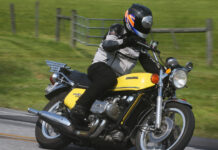(This Retrospective article was printed in the November 2006 issue of Rider.)
Finally, the Brits were coming out of their doldrums and presenting something new, relatively, to the motorcycle world…a triple. Wowzer! By the end of 1967 it was a very ill-kept secret that the Skunk Works at BSA/Triumph had completed this new design, and American motojournalists and potential buyers were demanding to know more. It should be noted that BSA had purchased Triumph back in 1951, and kept the marques very separate until the financial crises of the 1960s. Unfortunately, the Rocket 3, and its sibling Triumph Trident, were suffering the pain of design by committee, which delayed the production of these new triples way too long.
This bike was intended for the American market, and the late, great tech guru Gordon Jennings got tired of waiting and flew to England in mid-1968 in order to get his hands on one. Admittedly, he was more interested in the motor than in the aesthetics, and was awfully kind to this Buck Rogerish-looking machine, with its squared-off tank and ray-gun exhausts. He waxed enthusiastic about what was really, by that time, an old-fashioned OHV engine, which boasted a respectable 58 horsepower at 7,250 rpm.
A little background. In 1962 the BSA/Triumph development staff understood that they needed to develop a new engine, as the vertical twin had more or less reached its design limitations. They adhered to the old Edward Turner dictum that a parallel twin engine should not exceed 650cc or 6,500 rpm, while marques like Norton and Royal Enfield had taken their twins to 750 size, but not with resounding success. The future-seeing types were actually looking for an entirely new engine concept, such as an in-line four, perhaps with an overhead camshaft, but that would take time and money (in short supply) and an interim carryover concept was needed…ergo, the OHV triple.
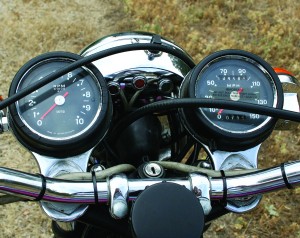
The triple was essentially a Triumph 500 twin with an extra cylinder, and in 1963 a prototype had been built and approved. But it would be five too-long years before the first Rockets (and Tridents) came off the assembly line. When they did, the engines, as Jennings noted, were to be commended. Most striking was the one-piece forged crankshaft, with 120-degree throws and supported by four main bearings…a sturdy piece of work if ever there was one, and one reason the Rocket 3 did so well in its brief racing career. The three cylinders were cast as one block, and the cylinder head—also a single casting—was secured by no less than 12 bolts. In Triumph fashion a camshaft at the rear of the cylinders operated the intake pushrods, a front camshaft and the exhaust pushrods. Feeding high-test fuel to the 9:1 compression chambers were three 27mm Amal Concentric carburetors, and firing the spark plugs was done by a Lucas ignition with three sets of points—regapping or replacing the points was not a job for amateurs. A gear-driven, two-stage oil pump kept 6.5 pints of lubricant flowing through the system, which included an oil cooler mounted in front of the cylinder head.
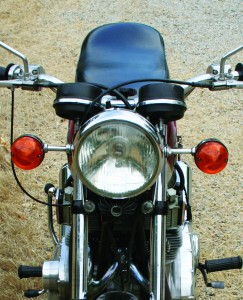
Open the two petcocks, tickle the outside two carburetors to get a little fresh gas in the system, turn on the key and give a hefty kick…nice sound. Very nice sound, reminiscent of the old Ariel Square Four.
A triplex primary chain ran back to a single-plate dry clutch, a new notion for BSA, and one that worked quite well. Four speeds were in the transmission. The unitized engine and tranny sat in a duplex frame, the cylinders angled slightly forward—as opposed to the Trident, which used a variation of the Triumph twin’s frame and kept the cylinders upright. The Rocket’s wheelbase was 58 inches, only 2 inches longer than the twin.
Brakes were rather minimal with an 8-inch twin-leading shoe on the front, a 7-inch single-leading shoe on the back; the brake-pad width was only about an inch and a half. Wheels were 19-inch front and back, and seat height was 32 inches. Suspension was standard for the era, a basic telescoping fork on the front, Girling shocks at the back. The weight, with five gallons of premium in the tank, was 520 pounds. And the price? A hefty $1,750 for 1969. A BSA Lightning 650 was a more reasonable $1,360.
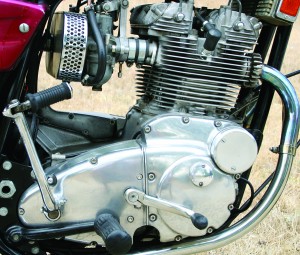
The Rocket 3 was a good bike, a great-handling piece of machinery and reliably powerful, but few potential purchasers were interested in competing at Daytona or Talladega. It was capable of doing the 30-second mile on the back roads, and genuine 120-mph motorcycles were hard to come by back then. This was a motorcycle that was born to go, and go fast.
While the triple was actually ready for production in 1966, when its appearance would have really created a furor, disagreements over styling delayed it for another year and a half. Late in 1968 the first Rocket 3s appeared in the United States, though the buying public turned thumbs down on the angularly futuristic design. Motorcycles were supposed to have curves as well as go around curves, and while the BSA did the latter extremely well, the former was unacceptable.
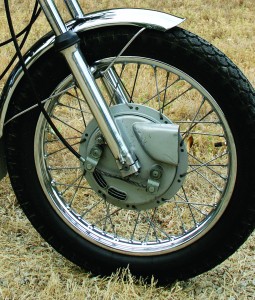
A few months after the introduction of the Rocket 3, the motorcycle world was shocked and awed by Honda’s CB750. For a mere $1,500, the buyer could get this SOHC four-cylinder engine, claiming 67 horsepower at 8,000 rpm, with a disc brake on the front, five-speed transmission and electric starting. Granted, once in the twisties the well-ridden Rocket could run away from the Honda, but few buyers were interested in that far edge of performance.
Major styling changes were mandated, and the Rocket 3 was cleaned up considerably; the redesign that appeared late in 1970 looked rather like those originally sketched from four years before. The bike was made to look much lighter, and weighed 40 pounds less, with a cleaner front fork, conical front-wheel hub, smaller 2.5-gallon gas tank, abbreviated fenders, etc. Not to mention new paint jobs. The last 150 or so Rockets built even had a five-speed transmission. For reasons unknown, in 1972 the Rocket 3 on the sidecovers was changed to Rocket Three.
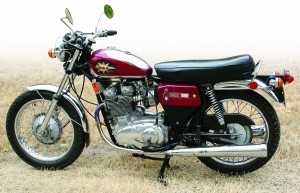
In the fall of 1972 Kawasaki introduced the 903cc Z1, with double overhead camshafts, boasting 82 horsepower at 8,500 rpm. What was a simple OHV engine to do? BSA shut the doors after 1972, though the inclined cylinders of the Rocket did live on as the Vetter-designed Hurricane and the final Triumph T160 Trident of 1975. But pushrods had given way to the inevitability of overhead camshafts, something the British engineers had failed to anticipate.


